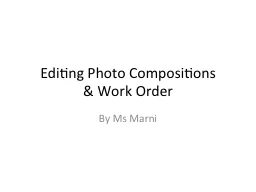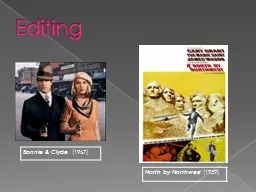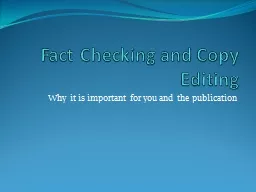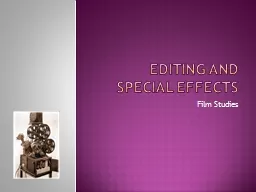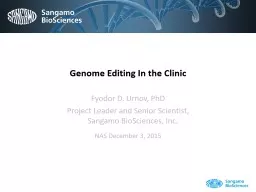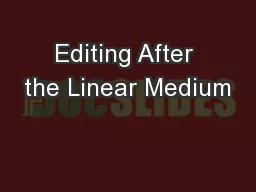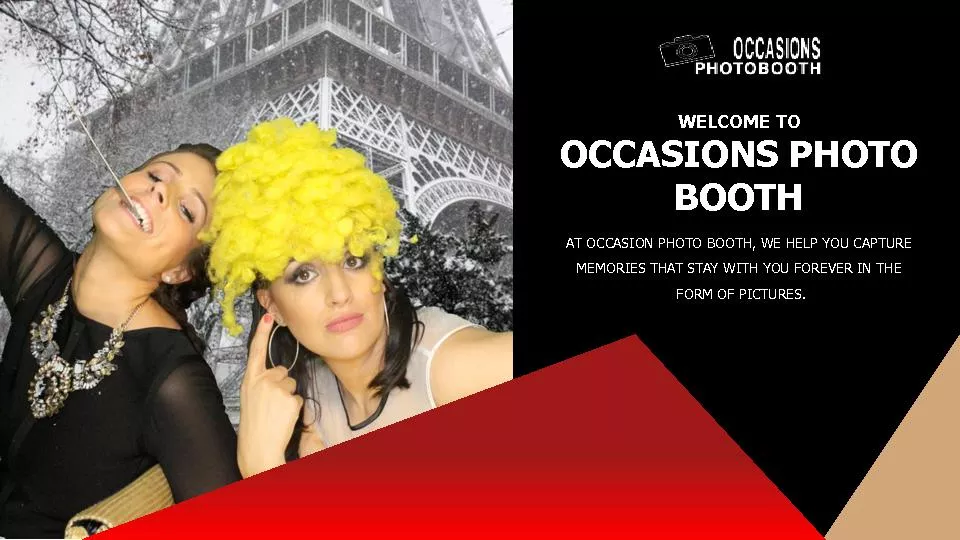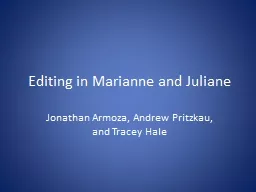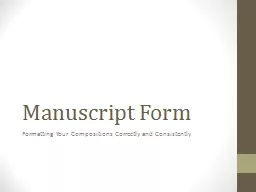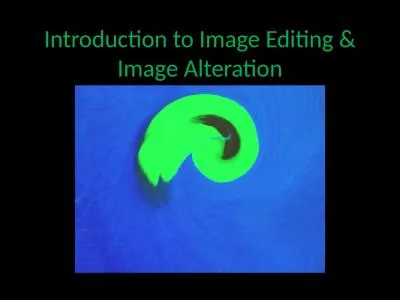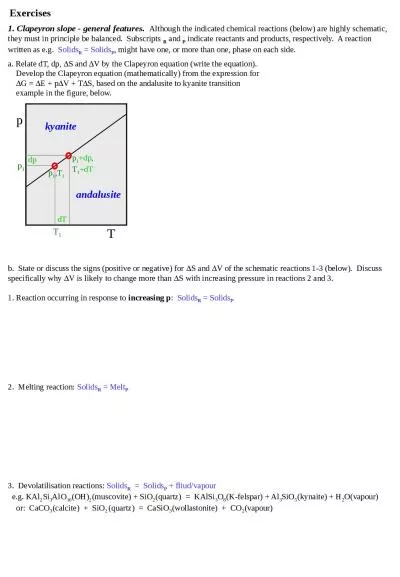PPT-Editing Photo Compositions
Author : min-jolicoeur | Published Date : 2017-07-28
amp Work Order By Ms Marni WORK ORDER Rotate Crop Resize Remove Noise Reduction Adjust Levels Adjust Curves Color Balance Hue Saturation Retouch clone stamp eraser
Presentation Embed Code
Download Presentation
Download Presentation The PPT/PDF document "Editing Photo Compositions" is the property of its rightful owner. Permission is granted to download and print the materials on this website for personal, non-commercial use only, and to display it on your personal computer provided you do not modify the materials and that you retain all copyright notices contained in the materials. By downloading content from our website, you accept the terms of this agreement.
Editing Photo Compositions: Transcript
Download Rules Of Document
"Editing Photo Compositions"The content belongs to its owner. You may download and print it for personal use, without modification, and keep all copyright notices. By downloading, you agree to these terms.
Related Documents

